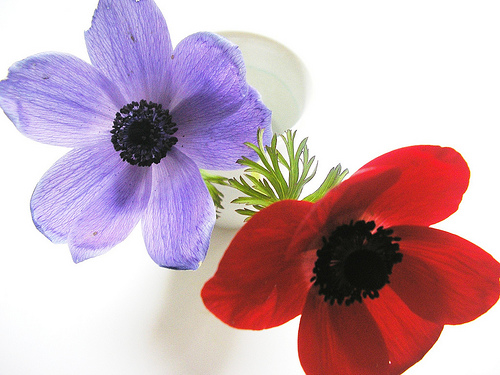Growing Anemones
Anemone has over 100 species with several interesting varieties that produce colour and a light form. I have picked out 3 contrasting sorts that are worth seeking out.
Wood Anemones, Wind Flower and Anemone Blanda
- Daisy-like flowers in white and purple to form a carpet of dazzling colour.
- These low-growing Anemones are extremely free-flowering and produce an eye catching mass
- With lush, fern-like foliage, they’re great for planting beneath Daffodils and Tulips, shrubs and trees.
Japanese Anemone
- Named varieties to look our for Prinz heinrich a semi-double with purple flowers. Queen Charlotte semi-doule pink, September Charm pink, Whirlwind semi-double white and Honorine Joberet the popular white with golden stamens
- Unlike the spring varieties they flower in Autumn on long stems up to 5′ tall
- The white Honorine Jubert is a striking plant and flowers in a shady position
- Propagate economically by root cuttings from established plants

Blousey Florists Anemones
- Anemone De Caen ‘Hollandia’ a scarlet flower on 10″ stems and St Brigid The Governor have performed exceptionally well this year. I have grown them in peat and peat with some grit to keep the compost open and they have remained reasonably moist.
- In pots the flowers are less robust than those in the garden.
- You can grow them from dark wrinkled tubers bought later in summer.
- Soak overnight in rain water before planting will speed up germination.
Anemone de Caen at T&M

2 thoughts on “Growing Anemones”
Our anemones have finished flowering and have produced a spherical seed head. Can I propagate a new plant from this seed head?
The seedhead will open to produce seeds on fluffy white cottons. They can be sown to try grow more plants, that is how they work in nature. The seeds may take several years to produce corms that are large enough to flower.
Comments are closed.